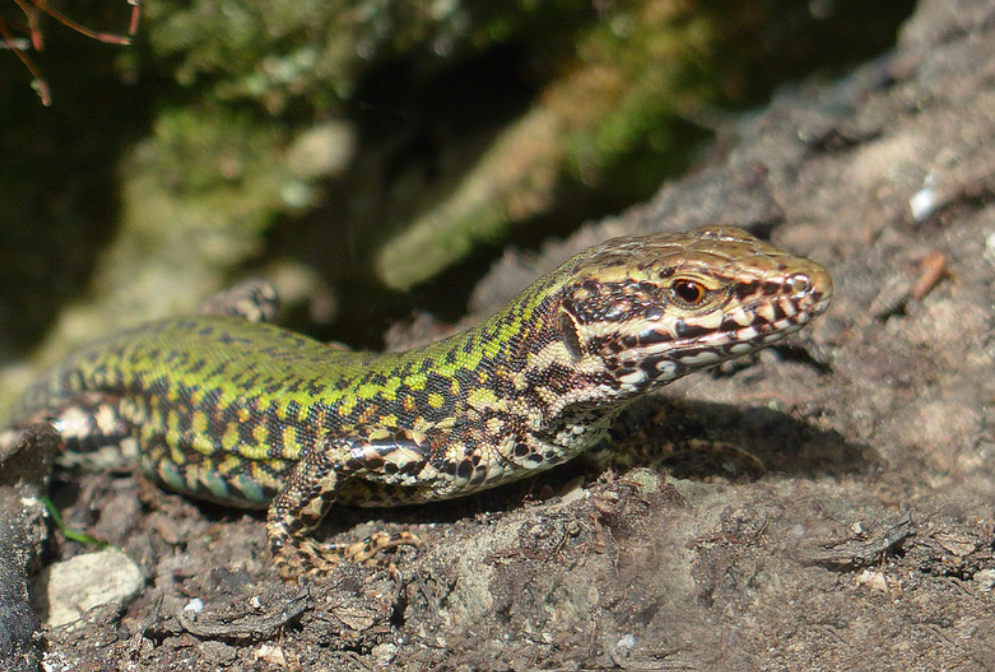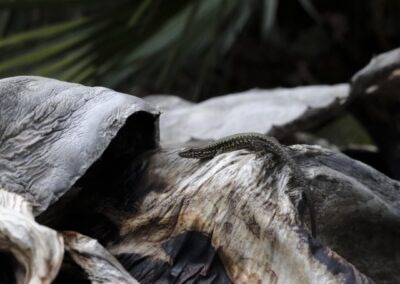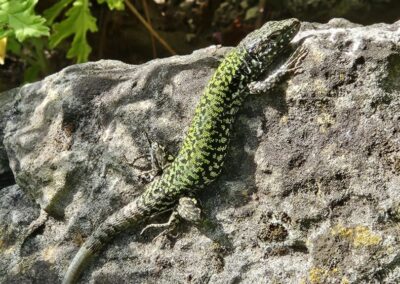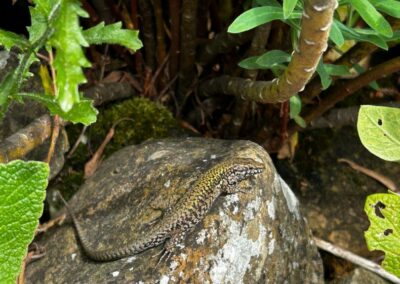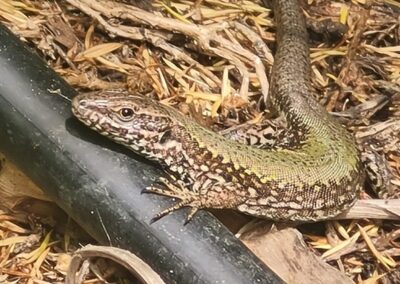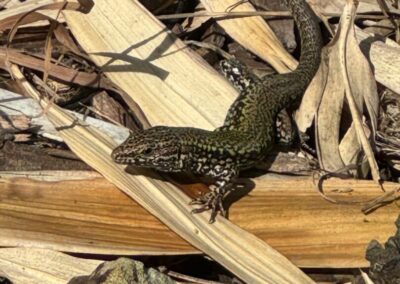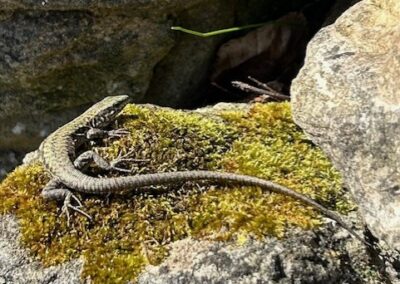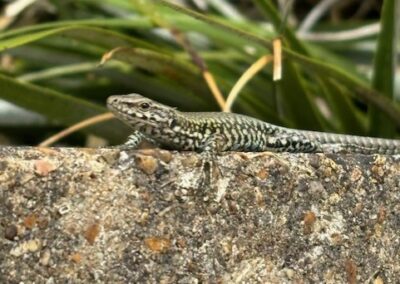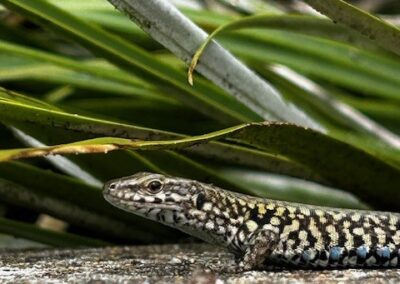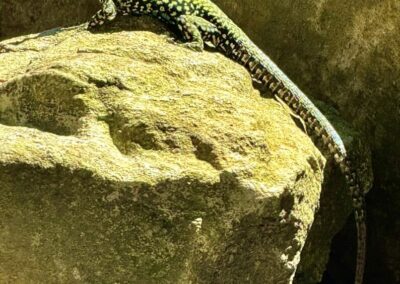
Meet the Wall Lizards
The Wall Lizards, Podarcis muralis, are a frequently seen and popular part of the Undercliff ecology. Research by the University of Oxford using the mitochondria of the animals has discovered that this long-standing population originates from Italy. Debate persists as to whether this is the northernmost limit of their natural range or whether they represent captive animals that have escaped or been introduced and then naturalised.
The Ventnor Botanic Garden lizards are usually heard before they are seen, scuttling through the leaf litter in the Mediterranean Garden. On sunny days they bask in the sunshine or hunt insect prey on the south-facing slopes, especially in the Arid Garden.
Grab yourself a Lizard Safari Trail Leaflet when you visit the garden and see how many lizards you can find!
CLICK HERE to see The Guardian – Jewel-bright lizards look at home on one British isle
Identification
- Adults up to 20 cm in length (including tail).
- Very long tail: 2/3 of overall length.
- Colour is highly variable: generally brown or grey or green.
- The pattern is highly variable: prominent black spots, mottling or stripes.
- Markings: The tail is brown, grey or rust in colour. May also have light bars on the sides. The Belly region has six rows of large, rectangular scales that are generally reddish, pink, or orange. May also have dark markings on the throat.
- Head is larger and limbs longer than native Common Lizards.
Distribution
Ecology
- Active during the day.
- Generally a climbing species.
- Prefers rocky environments such as boulders, rocks and walls.
- Eat insects and other invertebrates.
- Emerges from hibernation in spring and begins breeding.
- Males are highly territorial and may defend an area of up to 25 square metres.
- Females lay between 2-10 eggs.
- Eggs hatch after 6-11 weeks during the summer.
Predators and other threats
The Wall Lizard is classified as ‘least concern’ by the IUCN as it has a tolerance to a wide extent of habitats and a wide distribution throughout its native range. It is however protected by legislation throughout much of its native range and is listed under Appendix II of the Bern Convention and appendix IV of the European Union Habitats Directive. Within its natural distribution range, the Wall Lizard faces pressure from tourism development of its preferred habitat and loss of habitat through agricultural intensification. The use of pesticides is also harmful, in addition to the introduction of non-native subspecies to localized populations.
VBG Young Lizard Photographer of the Year Competition
Throughout the summer season of 2024, we held our first junior photography competition. Open to participants under 16, the challenge was to capture an image of our famous wall lizards. We had dozens of wonderful entries from children of all ages but we finally whittled them down to a short list of 9 names and images who all received VBG goody bags but the eventual winner chosen by the Director was ….
🎉 Seth Newman – Congratulations to our winner ! 🎉.
His image was chosen for composition and the unusual background. Seth won a family membership to the Garden, as well as a host of Lizard goodies from the Puya Boutique.
You can see the 9 shortlisted images and Seth’s winning shot below.
Tel: 01983 855397 | Ventnor Botanic Garden Community Company C.I.C | Company Number: 07976468 | Registered Address: Undercliff Drive, Ventnor, Isle of Wight, PO38 1UL

